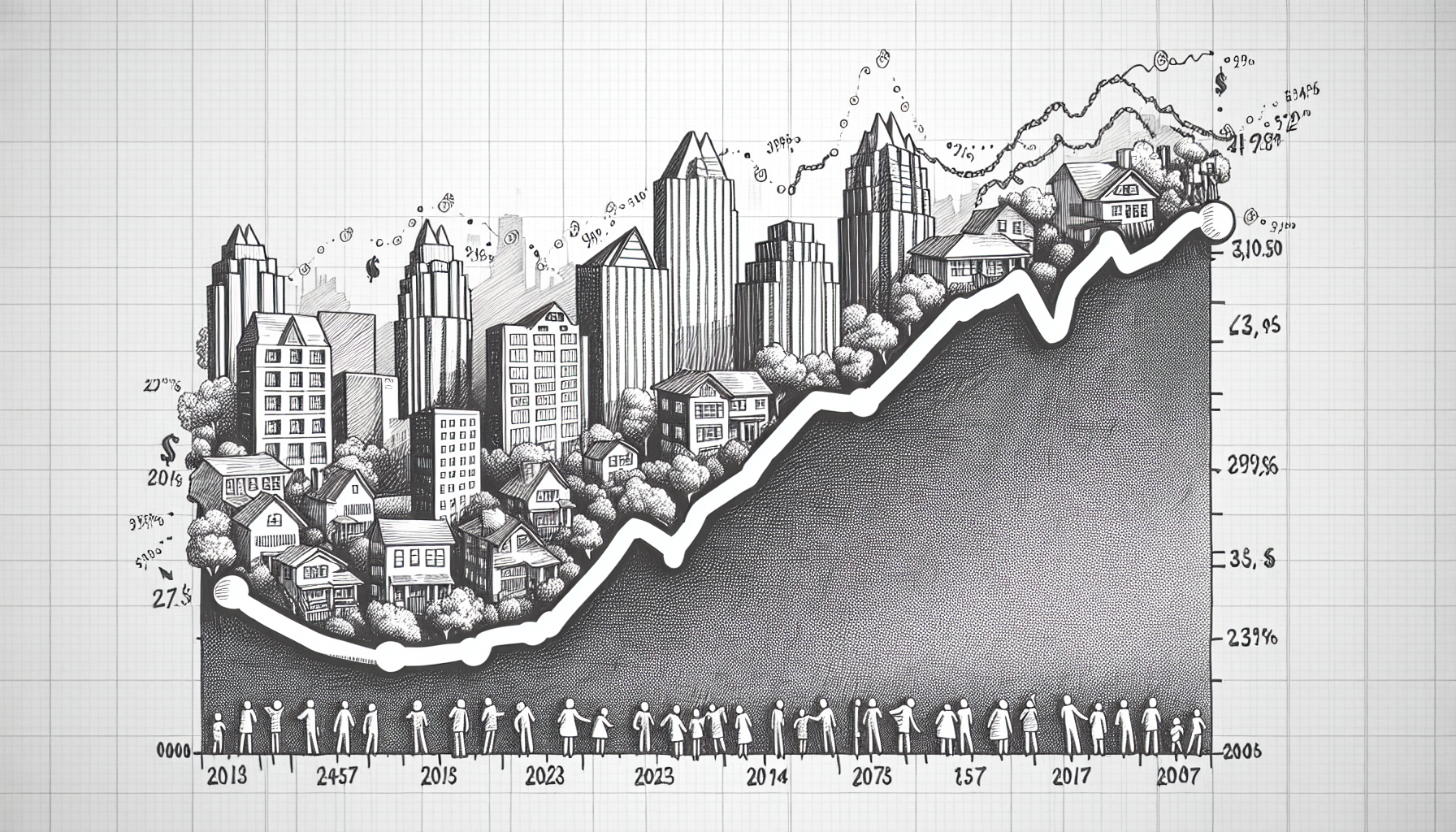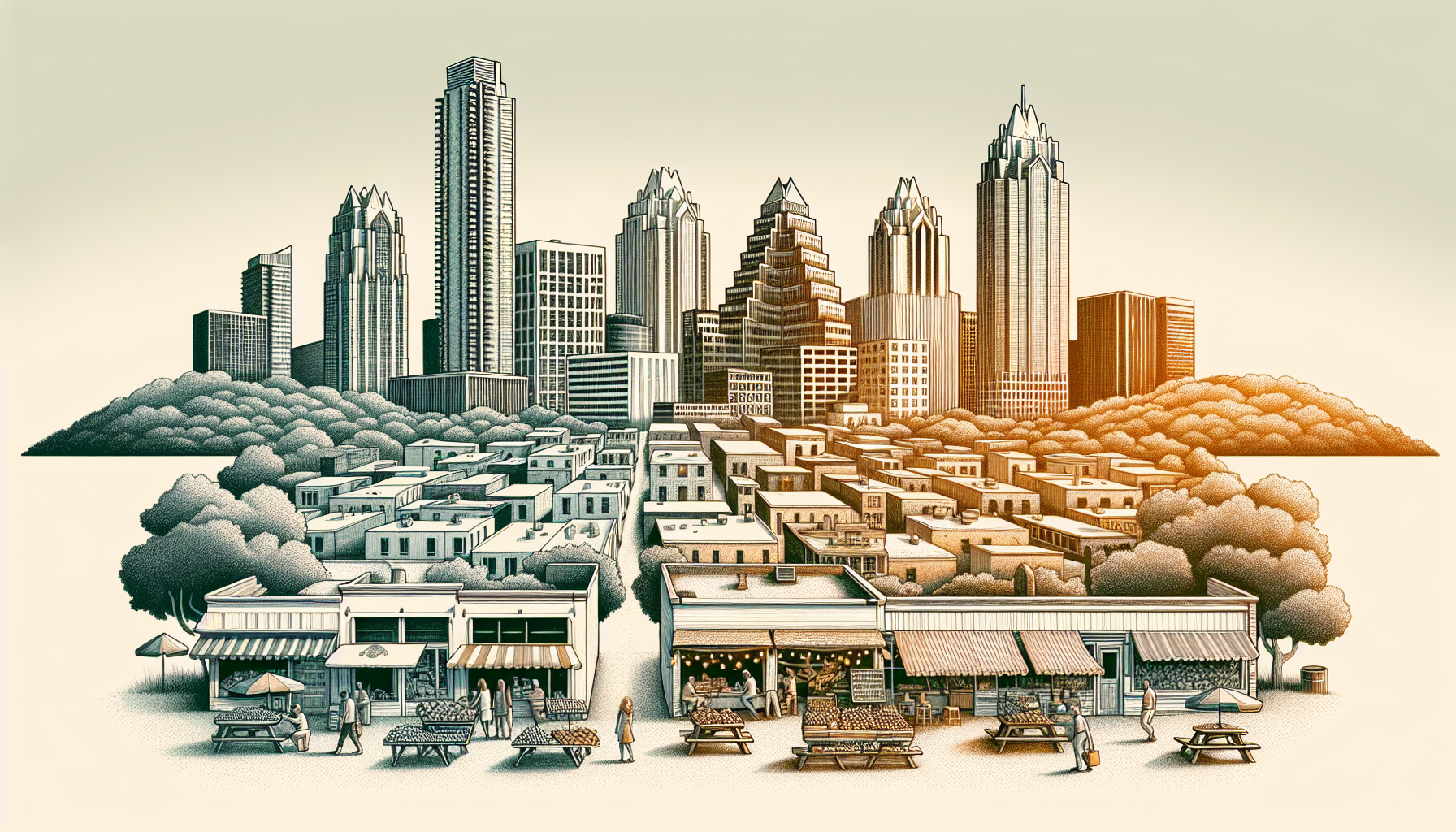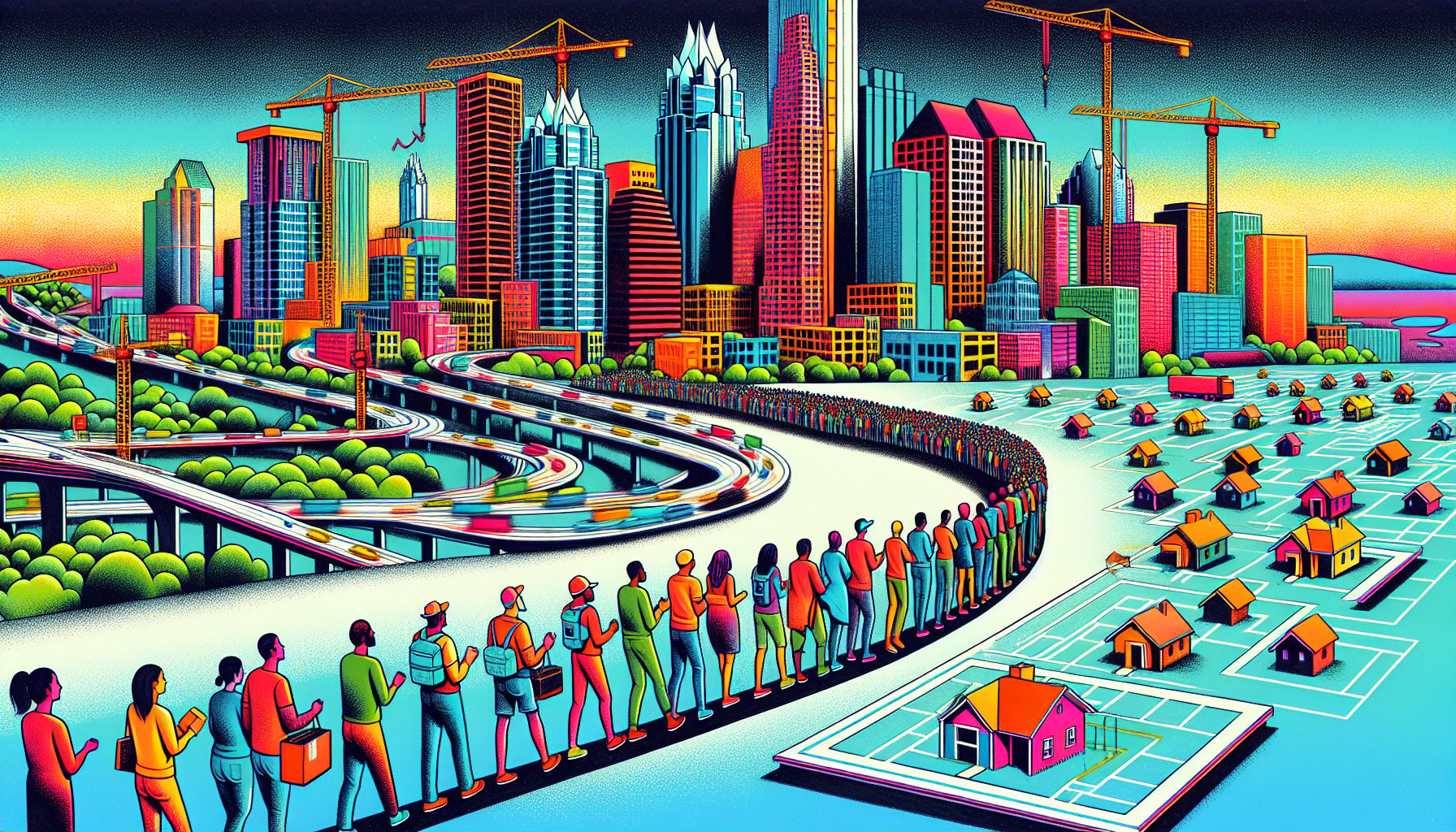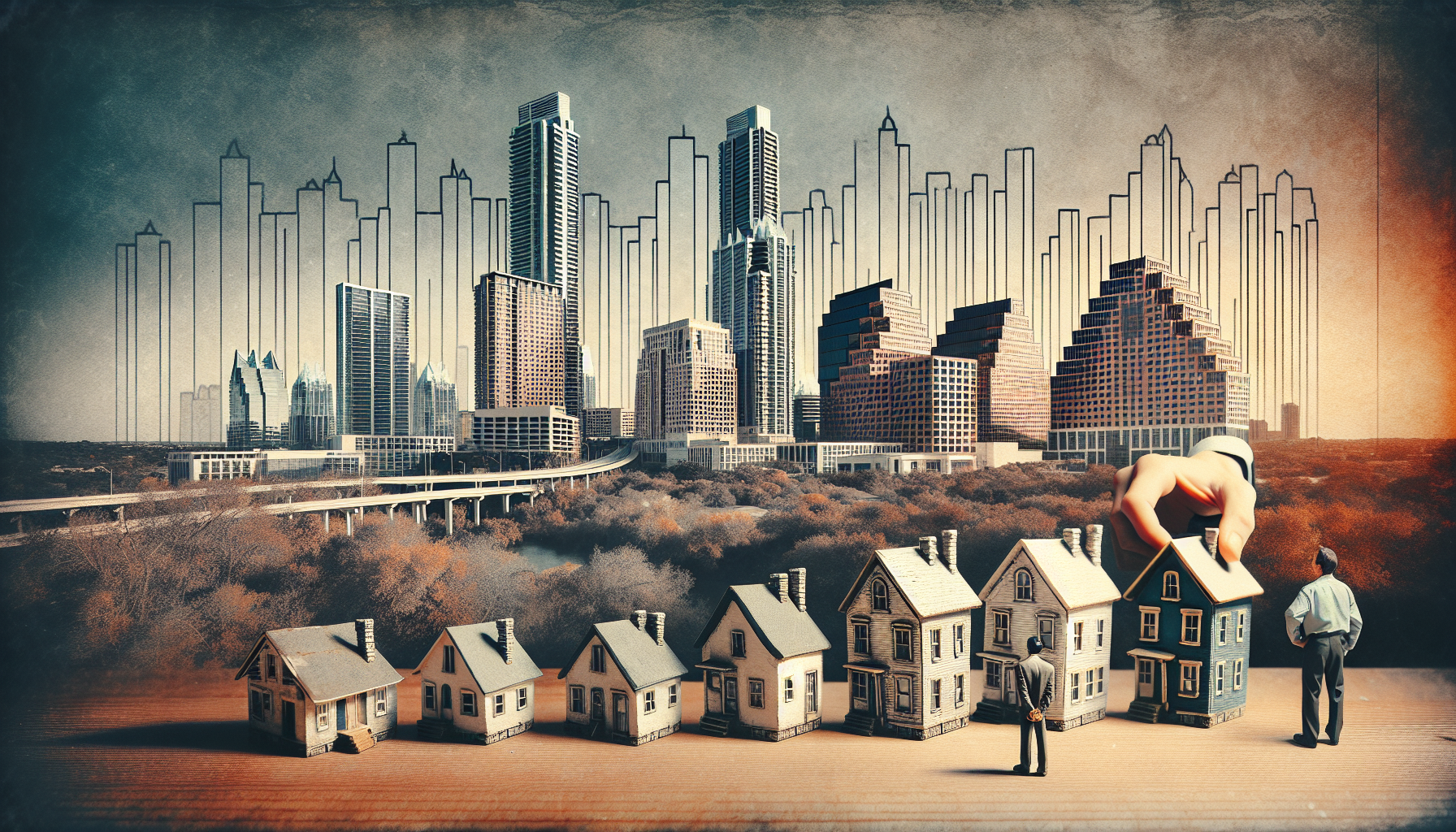Is Austin Expensive? Decoding the Cost of Living in Texas' Trendy Capital

Apr 15, 2024
Is Austin Expensive? Decoding the Cost of Living in Texas’ Trendy Capital
Asking “Is Austin expensive?” is commonplace among prospective movers and residents. In Austin, living costs such as housing and leisure can be higher compared to other cities in Texas, but how does it compare on a national scale? This article provides a direct comparison to help you gauge Austin’s affordability and anticipate your expenses in this dynamic urban locale.
Key Takeaways
- Austin’s cost of living is influenced by key factors such as housing, transportation, food, and entertainment, with housing being the most significant expense. Ongoing demand has led to high home and rental prices, making the market favorable for renters over buyers.
- Compared to other major U.S. cities, Austin’s cost of living is more economical, with a cost of living index of 97.8 which is below the national average. Additionally, while average salaries may be lower, they are often offset by the city’s lower living expenses.
- Affordability challenges in Austin stem from increasing home values and rents, a shortage of affordable homes, and socioeconomic disparities affecting minority communities. The city is employing strategies like the Affordability Unlocked program and seeking to increase affordable housing inventory to combat these issues.
Analyzing Austin’s Cost of Living

According to the Cost of Living Index (COLI) released by the Council for Community and Economic Research, understanding Austin’s cost of living requires examining multiple critical elements. The primary factors influencing Austin’s living expenses are as follows:
- Housing: The lion’s share of household spending in American cities is on housing costs, which accounts for approximately 33%.
- Transportation: To housing, transportation expenditures significantly influence the overall cost burden faced by residents in Austin.
- Food: Grocery shopping and eating out contribute substantially to life’s daily financial demands within this community.
- Entertainment: Money spent on leisure pursuits also has an impact on how affordable life is in this city.
Together these aspects integrate into a composite view depicting affordability within Austin.
The pressure placed upon homebuyers and renters primarily stems from limited availability meeting robust demand which escalates both prices for homes and rental rates across the area. When examining secondary but notable expenses beyond accommodation, transportation consistently ranks high, with people typically disbursing upwards of $7k annually. Paralleling that figure are food purchases while expenditure-related health insurance shares similarities with amounts dedicated to recreational activities.
Housing Costs

The housing market in Austin has undergone notable fluctuations throughout the pandemic. Although there has been a modest reduction in both the median price and median sale price of homes, prospects within this market continue to be advantageous for buyers.
Current data include:
- The average cost for leasing a one-bedroom residence within the Austin Metro Area is $1,119.
- As of September, monthly rents have reached an average of $1,885.
- The costs associated with purchasing an entry-level home in Austin are about 141% higher than those incurred from renting.
Such figures underscore that opting to lease property rather than purchase can be financially beneficial given current trends regarding rental and housing prices within Austin’s marketplace.
Despite seeing some decline over previous months, house prices within Austin are still positioned 27% above what is seen nationally on average. This indicates a robust demand among individuals looking to buy properties but simultaneously presents challenges due to soaring rent expenses. Patterns observed in the real estate scene around Austin point towards escalating housing-related expenditures, which contribute to escalating housing-related expenditures. living costs across this metropolitan area.
Transportation Expenses
The city of Austin presents various transportation modes like pedestrian-friendly routes, bike paths, and public transit systems. Residents can purchase a monthly pass for regular local bus services at $41.25 or opt for the commuter routes pass, which costs $96.25. Those living in single-family homes in Austin pay an average transportation user fee of around $13 each month.
Remarkably, transportation outlays are somewhat less burdensome in this city, with a cost index sitting at 91.3. It’s the most economical aspect compared to other expenses within the area. This means that even though residents may face higher housing expenditures, aspects such as transportation costs contribute to a more balanced overall cost of living within Austin.
Food and Dining
In Austin, Texas, the price of groceries usually matches the national average. This can vary with seasonal changes and different retailers. Eating out in Austin is reasonably priced; for instance, an inexpensive restaurant meal typically costs around $15 per person, while a three-course dinner at a more moderately priced establishment will set you back between $50 and $70 for two people.
Reflecting its burgeoning reputation as a hotspot for food lovers, Austin boasts diverse culinary offerings coupled with competitive prices. While gourmet eateries and upscale dining venues charge higher rates, grocery shopping and eating out expenses in Austin are on par with other major cities across Texas and tend to be somewhat less than those found in some of the most expensive urban areas nationwide. Thus enabling residents to enjoy a range of affordable options that align well with their cost-of-living framework.
Entertainment and Lifestyle
In the city of Austin, expenses related to entertainment are excluded from tax deductions. This applies except for certain business occasions, such as corporate festive gatherings and incentive travels. When it comes to marketing or customer engagement activities like attending sports events or playing golf rounds, these expenditures usually aren’t subtracted from taxable income. Yet businesses operating within the entertainment industry might be eligible for deductions on some outlays they incur, including fees paid to entertainers at their establishments.
The regulations surrounding these expenses influence the financial aspect of enjoying leisure activities in Austin and play a role in shaping lifestyle-related costs within the city. Nevertheless, despite bearing an impact on living costs, Austin’s dynamic scene of amusement remains an attractive element that not only entices visitors but also enhances the quality for its inhabitants. This appeal forms part of what shapes Austin’s broader cost-of-living landscape.
Comparing Austin to Other Major Cities

The overall cost of living in Austin is more budget-friendly when measured against some of the United States’ most expensive cities, including Honolulu, San Jose, San Francisco, and Manhattan. The cost of living index plays a vital role in assessing how affordable and economically attractive a city is. By examining this metric for Austin relative to larger metropolitan areas, one can discern the economic benefits or drawbacks associated with residing there.
This juxtaposition indicates that from an economic standpoint, Austin may be a preferable choice compared to other high-priced urban environments across the nation. It’s worth exploring How factors such as housing market trends, costs associated with daily life as reflected by the cost of living index – along with job prospects – fare when putting Austin side-by-side with these major municipalities.
Housing Comparison
In the context of housing expenses, Austin typically offers greater affordability compared to leading cities like San Francisco, Los Angeles, and New York City. One should take into account ancillary costs such as property taxes and upkeep that can influence the total cost of living.
Austin’s median home price has surpassed its historical averages but continues to be less than those found in San Francisco, New York, and Los Angeles. Even with elevated property prices, the collective costs associated with living in Austin are usually more manageable than in these other prominent urban areas, which aids buyers looking for attainable homeownership options.
Cost of Living Index Comparison
Living cost indexes serve as quantitative measures to compare the relative financial demands of residing in diverse locations. These metrics utilize a score of 100, which represents either the national average or a base city’s expense level, for comparison purposes. As recorded in the third quarter of 2023, Austin’s living cost index is at 97.8—indicating it falls below the nationwide mean.
In contrast to metropolitan giants like San Francisco and Los Angeles, Austin showcases a notably reduced cost of living index. Such an index is pivotal for individuals calculating potential adjustments to their income across different urban landscapes and influences choices about homebuying or contemplating moves to new cities.
Employment Opportunities and Salaries
Austin ranks within the top five United States cities for job prospects, surpassing sizable urban centers including Houston, Los Angeles, Chicago, and New York City.
The city’s dynamic employment market, combined with its more affordable cost of living, contributes to Austin’s appeal.
Although salaries in Austin might not match those found in metropolises like San Francisco or New York City on average, the gap is frequently compensated for by Austin’s reduced living expenses. This equilibrium between income and costs renders Austin an attractive destination for both working individuals and households.
The Impact of Population Growth on Austin’s Expenses

The substantial increase in firms and individuals relocating to Austin, drawn by its dynamic and varied economic landscape, has transformed it into a market favoring sellers. This influx of newcomers to the city, together with the prevailing low mortgage interest rates, has escalated the demand for homes. Consequently, there’s been a noticeable reduction in affordable housing availability, which is exerting pressure on general living costs.
To grasp how these elements are affecting living expenses more distinctly within Austin’s rapidly expanding population context, we need to investigate both migration patterns and infrastructure evolution taking place across the city.
Migration Trends
For the first time on historical record, more homebuyers are choosing to leave Austin than arrive during this year’s third quarter. Even as such a trend emerges in Austin, across the nation, relocation rates remain elevated; approximately 25.9% of individuals seeking homes are looking to migrate to another part of the country within that same timeframe.
Contrastingly, among all regions evaluated by the National Association of Realtors, it is clear that there exists an intense ‘pent-up demand’ for housing specifically in the area encompassing both Austin and Round Rock—a signal pointing towards a robust real estate market ripe for investment opportunities. It’s noteworthy that despite people relocating from Austin in pursuit of affordable living elsewhere, households burdened with high costs—spending over 30% of their income on housing—are consistently at similar levels throughout different periods, which shows stability in this metric. This data serves as an essential resource for studies related to community and economic development within the region.
Infrastructure and Development
The unchanged state of Austin’s land development code since 1984 is a key factor in the city’s affordable housing crisis. Efforts to mitigate this problem include several actions:
- Removing requirements for parking spaces from developers, which can make way for additional residential units instead of car parks.
- Revising zoning regulations to support higher density and mixed-use projects.
- Offering rewards to those who construct housing that is financially accessible.
- Enhancing public transport services, decreasing dependency on personal vehicles.
Such measures are designed with the intention of reducing housing costs and boosting access to affordable living spaces within Austin.
In June 2022, the Street Impact Fee Program was initiated. This program collects fees from new developments specifically for expanding road capacity where needed due to growth. The funds raised remain within the Service Area they originate from so as to directly benefit local infrastructure enhancements.
During the last quarter of 2023, compared with its counterpart in 2022, there has been a notable surge by one-third in permits issued for multifamily dwellings indicating an upturn in construction activity meant for residential purposes.
Is Austin’s Real Estate Market Overvalued?
While recent research suggests that homes in Austin continue to be among the most overvalued in the United States, the city’s housing market has shown a resurgence in activity with increasing sales and listings, defying earlier predictions of a market crash.
Despite high-interest rates, the demand for houses in Austin is growing, with a significant rise in home sales in January compared to the previous month and the same period in the previous year. Forecasts for national home prices in 2024, including Austin, have been revised upward, indicating a hotter housing market than previously anticipated.
Many experts consider Austin’s robust economy and growing population to make it a worthwhile long-term investment for homebuyers, despite the uncertainty surrounding the future of the city’s real estate market. This confidence is driven by the city’s economic strength and increasing number of residents.
Factors Driving Home Prices
The burgeoning populace of Austin has resulted in heightened earnings among its community members, which has, in turn, fueled the surge in both home prices and rental rates within the city. Notably, though, there has been a roughly 5% year-over-year reduction in the median home price across Austin, thereby presenting residents with better prospects for acquiring homes.
Despite more new listings entering the market, a decline in active ones suggests that buyer demand remains robust—a factor likely to continue driving up home prices. The direction of future property values within Austin’s housing market is unpredictable. Nevertheless, should mortgage rates fall, they would fall. It may incite an intense wave of purchasing activity that could exert upward pressure on prices.
Long-term Investment Potential
Despite looming uncertainties, Austin’s long-term investment prospects continue to shine. The city’s solid economy and expanding population render it an attractive investment destination, despite forecasts indicating a notable 12.2% decline in home prices within the Austin area for 2024.
Affordability Challenges in Austin

In Austin, the cost of living continues to escalate due to:
- Increases in housing values and rental prices without a proportionate rise in earnings since 2012
- A pronounced deficit of affordable houses exists, with over half of four-member families earning at or below 80% of the median family income struggling to find suitable homes
- An acute shortfall of approximately 65.6% for affordable housing options in District 4.
This situation disproportionately affects minority populations within Austin, notably Hispanic or Latino as well as Black or African American communities, who encounter greater difficulties regarding affordability when compared to their non-Hispanic white and Asian counterparts. Consequently, this unrelenting surge in the cost associated with living has forced numerous inhabitants—predominantly those from lower-income brackets—to seek relocation to areas where financial demands are more manageable.
Strategies for Affordable Living
To overcome these challenges, several strategies for affordable living have emerged in Austin. Renting a home in Austin is significantly more affordable than buying, allowing renters to save approximately $2,165 per month in comparison to buyers. Another key strategy is utilizing the Affordability Unlocked program, which has been instrumental in providing more affordable housing options by relaxing specific building codes.
In addition, seeking out experienced real estate agents and connecting with real estate investors can be an effective strategy for locating affordable housing within Austin. These strategies are aimed at mitigating the affordability challenges and making Austin a more accessible and desirable place to live.
City Initiatives to Address Affordability
The city of Austin is vigorously tackling the challenges associated with affordable housing. By expanding its stockpile of budget-friendly living spaces using affordable housing bonds and tax incentives, it’s making headway in this pressing issue. In partnership with the City Council, the Austin Board of REALTORS® advocates for policy changes that support the provision of accessible housing solutions for those who require them.
Together, these efforts and strategies aimed at enhancing affordability are critical to overcoming the ongoing crisis within Austin. They showcase a dedication on the part of the city to maintain a sustainable community where inclusivity allows all residents to thrive.
Summary
In summary, Austin’s appealing character and dynamic way of life persist in drawing both people and companies. The escalating expenses tied to city living pose substantial hurdles. Fueled by population expansion and heightened demand, the housing market within the city has experienced a considerable hike in costs. The municipality has enacted measures along with numerous affordable living strategies to counter these obstacles. Despite possible drawbacks, Austin remains an attractive option due to its strong economy, lively job scene, and prospects for enduring investment opportunities—offering a distinctive mix of affordability juxtaposed with high-quality life standards.
Frequently Asked Questions
What salary do you need to live in Austin?
To maintain a comfortable lifestyle as a family of four in Austin, an annual income of $87,105 is necessary, while single individuals require $42,755 per year. Monthly, this equates to about $7,259 for families and roughly $3,563 for singles.
Why is Austin getting so expensive?
Due to the rapid increase in population within Austin, there is an escalating demand for housing coupled with a scarce supply of reasonably priced choices. This imbalance has resulted in a surge in both home prices and rental rates throughout the city.
What factors are driving up home prices in Austin?
In Austin, escalating home prices can largely be attributed to the city’s expanding population and rising income levels. This surge is compounded by a reduction in available listings coupled with robust ongoing demand, inflating the cost of homes.
What strategies exist for affordable living in Austin?
Think about opting to rent a home rather than purchasing one in Austin if you’re looking for cost-effectiveness and the potential for considerable savings each month. Austin’s Affordable Unlocked initiative increases access to affordable housing by easing restrictions on construction regulations.
Engaging knowledgeable real estate professionals can assist you in locating reasonably priced housing options within the city.
What city initiatives are in place to address affordability in Austin?
The city of Austin is actively working to tackle the issue of affordable housing by employing strategies that include the issuance of affordable housing bonds, the utilization of tax credits, and fostering cooperative efforts between the City Council and the Austin Board of REALTORS. These measures are directed towards fulfilling the demand for economical housing choices in Austin.
- Categories
- City Guides |
- Relocation Guides



